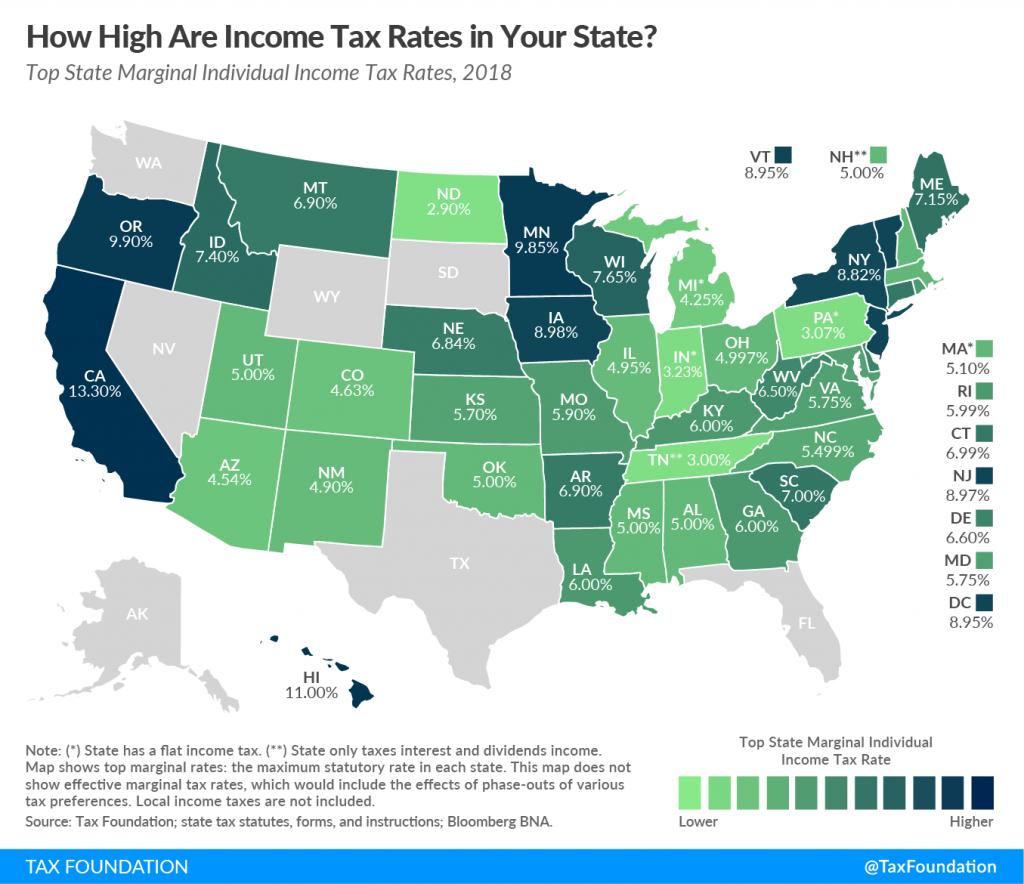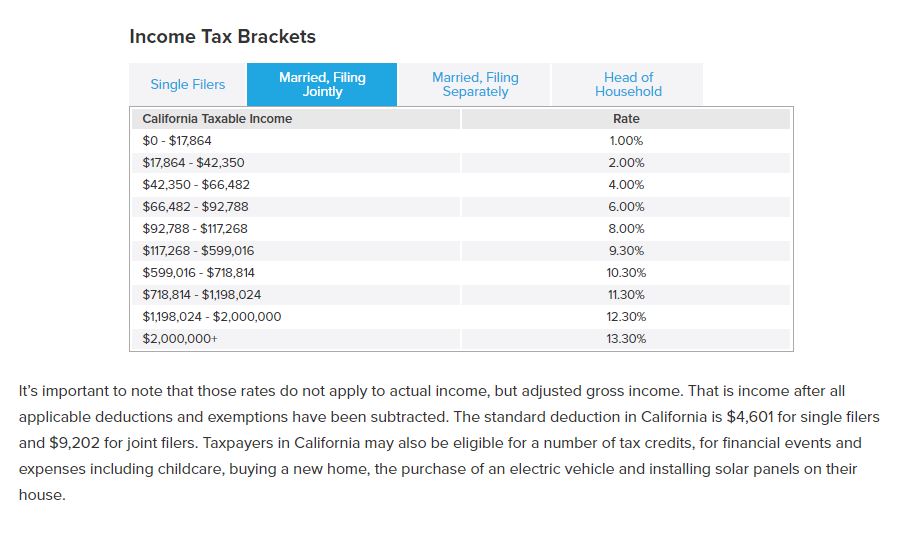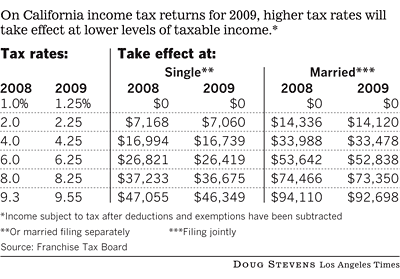
California has below-average property taxes due to Proposition 13, the famous 1978 measure that capped increases to no more than 2 percent a year.It’s 9.3 percent for those making $53,000 to $269,000 and 13.3 percent for those making $1 million or more. The state has the highest personal income tax rate for its wealthiest.California has the highest statewide sales tax rate, at 7.25 percent, and is ranked ninth by the Tax Foundation in combined state and local sales tax rates.The measure includes increasing the annual vehicle fee between $25 and $175, depending on the vehicle’s value. Brown and lawmakers also approved a 12-cent gas-tax hike in 2017 to help raise $5 billion a year for aging infrastructure. Four years later, voters extended the income tax increasefor 12 more years. In November 2012, the state passed a temporary hike in sales taxes of 0.25 percent and raised personal income taxes on the rich. That’s in a state with more than 39 million residents and personal income worth nearly $2 trillion that year.Ĭalifornia’s taxes have risen in ranking partly because of voter-approved increases. In 2015, state and local governments collected $228.7 billion in taxes, including property, sales, personal and corporate income levies and a few others, according to the census. The most common is percentage of personal income.

There’s a variety of ways to measure taxes.

California state and local governments now spend $25 billion a year on pension payments and retiree health care for public employees-a threefold increase since 2003, with payments projected to grow. On top of all these costs are some long-term debts that have flown under the radar, such as retirement obligations for public workers.
California tax brackets how to#
The question of how to sustain this coverage has triggered a public debate about a single-payer health care system for California. The bulk of that cost has been borne by the federal government, but there’s much uncertainty about ongoing federal aid as Republicans in Congress propose to scale back spending. Today, California’s Medi-Cal program tops $100 billion each year and covers 13.5 million, or one in three, residents. On health care, California was early to embrace the federal Affordable Care Act, which established an individual health-insurance market and expanded Medicaid, known here as Medi-Cal, which covers the poor. Taxpayers also subsidize a higher-education network made up of community colleges and the California State University and University of California systems. That amounts to $11,614 per pupil from state and local sources and reflects recent years of improved funding due to the improved economy and voter-approved tax increases. The state is projected to spend $78.3 billion* in 2018, from its own revenue sources, on six million students in K-12 public schools. This reporting project was produced in partnership with the Ravitch Fiscal Reporting Program at the CUNY Graduate School of Journalism. We’ll walk you through what we live with today, the problems we encounter and the proposals to fix them. Let’s take a deeper look at California’s tax structure, examine the tradeoffs we live with as a result and explore what changes might be afoot. Yet few have been willing to initiate change.

Politicians like to talk about the problem, explaining how Proposition 13, the famous 1978 measure that limited property taxes, has created unequal tax burdens. The overall tax structure hasn’t been updated, leaving parts of the economy taxed at some of the nation’s highest rates while other sectors, such as services-which many other states do tax-aren’t taxed in California. Past bipartisan efforts to reduce volatility without raising taxes on the poor and working class have had limited success. Jerry Brown has warned, state and local governments are more vulnerable than ever to teacher and police layoffs, park and library closures and cuts in health and welfare services for the poor. With an “inevitable recession lurking in our future,” Gov. School districts handed out 30,000 pink slips to teachers, and the state was so cash-strapped it gave out IOUs when it couldn’t pay some of its bills.Ĭalifornia is now enjoying one of the longest economic expansions in state history, but the good times can’t last forever.

During the Great Recession, the capital-gains taxes that sustained the state in good times plummeted. While it delivers big returns from the rich whenever Wall Street goes on a bull run, it forces state and local governments to cut services, raise taxes or borrow money in a downturn. California’s tax system, which relies heavily on the wealthy for state income, is prone to boom-and-bust cycles.


 0 kommentar(er)
0 kommentar(er)
